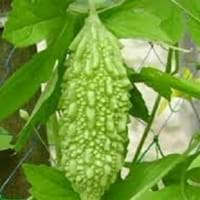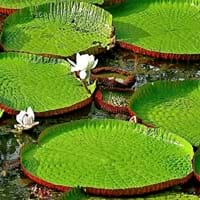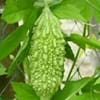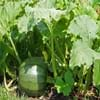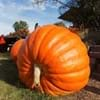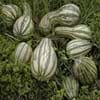Origin
North America, Mexico, Central America
Hybrid origin
Types
Not Available
Not Available
Number of Varieties
Not Available
Habitat
Loamy soils, Moist Soils, Subtropical climates
along watercourse
USDA Hardiness Zone
5-7
10-15
Sunset Zone
A1, A2, A3, H1, H2, 1a, 1b, 2a, 2b, 3a, 3b, 4, 5, 6, 7, 8, 9, 10, 11, 12, 13, 14, 15, 16, 17, 18, 19, 20, 21, 22, 23, 24
21,22
Habit
Vining/Climbing
Spreading
Flower Color
Yellow, Orange, Dark Green
White, Pink, Light Pink
Flower Color Modifier
Bicolor
Not Available
Fruit Color
Yellow, Dark Green
Not Available
Leaf Color in Spring
Green, Dark Green
Green, Yellow green, Bronze
Leaf Color in Summer
Green, Dark Green
Green, Yellow green
Leaf Color in Fall
Green, Dark Green
Green, Yellow green
Leaf Color in Winter
Not Available
Green, Yellow green
Leaf Shape
Palmate
Disc shaped
Plant Season
Summer, Fall
Spring, Summer, Fall
Sunlight
Full Sun
Full Sun
Growth Rate
Very Fast
Fast
Type of Soil
Loam, Sand
Clay, Loam
The pH of Soil
Neutral
Acidic, Neutral
Soil Drainage
Well drained
Not Available
Bloom Time
Indeterminate
Summer, Indeterminate
Tolerances
Drought
Wet Site
Where to Plant?
Ground
In Water
How to Plant?
Seedlings
Seedlings
Plant Maintenance
Medium
Medium
Watering Requirements
Keep ground moist, Requires regular watering
Keep immersed in water
In Summer
Lots of watering
Aquatic Plant
In Spring
Moderate
Aquatic Plant
In Winter
Average Water
Aquatic Plant
Soil pH
Neutral
Acidic, Neutral
Soil Type
Loam, Sand
Clay, Loam
Soil Drainage Capacity
Well drained
Not Available
Sun Exposure
Full Sun
Bright direct sunlight
Pruning
Cut out old flower stalks, Prune after flowering, Remove dead or diseased plant parts
Remove damaged leaves
Fertilizers
Apply 10-10-10 amount, Apply 12-12-12 amounts, Nitrogen, Phosphate, Potassium
No fertilizers needed
Pests and Diseases
Aphids, Army-worms, Bacteria wilt, Bacterial leaf spot, Blight, Cucumber beetles, Cutworms, Fusarium leaf spot, Red spider mite
Aphids, Snails
Plant Tolerance
Drought, Full Sun, Salt and Soil Compaction
Frost, Full Sun
Flower Petal Number
Single
Double
Foliage Texture
Coarse
Bold
Foliage Sheen
Matte
Glossy
Attracts
Bees, Flies, Flying insects
Insects, Moths, Snakes
Allergy
Hypoglycaemic Coma, Irregular Heart Rhythm, Miscarriage
Skin irritation
Aesthetic Uses
Not Used For Aesthetic Purpose
Cottage Garden, Showy Purposes
Beauty Benefits
Acne, For treating wrinkles, Improve hair condition, Nourishes scalp, Removes dandruff
Making cosmetics
Environmental Uses
Food for animals, Insect Repellent
No fertilizer, pesticides, or herbicides needed, Very little waste
Medicinal Uses
Anti-fungal, Detoxification, Diabetes, Gastrointestinal disorders, Weight loss
Not Available
Part of Plant Used
Fruits
Flowers
Other Uses
Cosmetics, Repellent, Use in Chinese herbology
Used as Ornamental plant
Used As Indoor Plant
No
Sometimes
Used As Outdoor Plant
Yes
Yes
Garden Design
Dried Flower/Everlasting, Vine
Feature Plant, Tropical, Water Gardens
Botanical Name
CUCURBITA pepo 'Bicolor Pear'
VICTORIA 'Longwood Hybrid'
Common Name
Bicolor Pear Gourd, Ornamental Gourd
Giant Waterlily, Longwood Hybrid Giant Waterlily
In German
Bittermelone
Riesen- Seerose
In French
Momordica charantia
géant nénuphar
In Spanish
Momordica charantia
lirio de agua
In Greek
Not Available
νούφαρο
In Portuguese
Momordica
waterlily
In Polish
Przepękla ogórkowata
Lilia wodna
In Latin
Not Available
ingens aqua lilium,
Phylum
Spermatophyta
Angiosperms
Class
Magnoliopsida
Equisetopsida
Order
Violales
Nymphaeales
Family
Cucurbitaceae
Nymphaeaceae
Clade
Not Available
Angiosperms
Tribe
Not Available
Not Available
Subfamily
Cucurbitoideae
Not Available
Number of Species
Not Available
Season and Care of Bitter Gourd and Giant Waterlily
Season and care of Bitter Gourd and Giant Waterlily is important to know. While considering everything about Bitter Gourd and Giant Waterlily Care, growing season is an essential factor. Bitter Gourd season is Summer and Fall and Giant Waterlily season is Summer and Fall. The type of soil for Bitter Gourd is Loam, Sand and for Giant Waterlily is Clay, Loam while the PH of soil for Bitter Gourd is Neutral and for Giant Waterlily is Acidic, Neutral.
Bitter Gourd and Giant Waterlily Physical Information
Bitter Gourd and Giant Waterlily physical information is very important for comparison. Bitter Gourd height is 60.00 cm and width 90.00 cm whereas Giant Waterlily height is 510.00 cm and width 37.00 cm. The color specification of Bitter Gourd and Giant Waterlily are as follows:
Bitter Gourd flower color: Yellow, Orange and Dark Green
Bitter Gourd leaf color: Green, Dark Green
Giant Waterlily flower color: White, Pink and Light Pink
- Giant Waterlily leaf color: Green, Yellow green and Bronze
Care of Bitter Gourd and Giant Waterlily
Care of Bitter Gourd and Giant Waterlily include pruning, fertilizers, watering etc. Bitter Gourd pruning is done Cut out old flower stalks, Prune after flowering and Remove dead or diseased plant parts and Giant Waterlily pruning is done Remove damaged leaves. In summer Bitter Gourd needs Lots of watering and in winter, it needs Average Water. Whereas, in summer Giant Waterlily needs Aquatic Plant and in winter, it needs Aquatic Plant.
